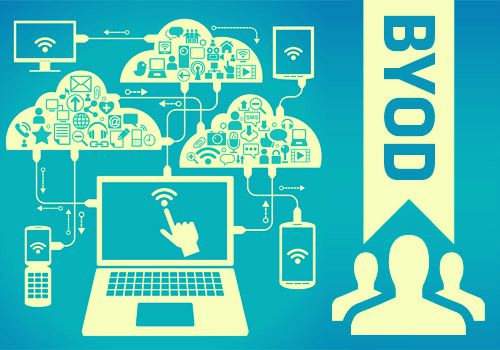
Far from being hyper-developed human-like robots, awaiting their time to outsmart their creators, Artificial Intelligence nowadays serves as a sort of extra smart software ready to smoothen up complex tasks behind hundreds of digital-based applications. Powered by algorithms that are able to process millions of orders in less than seconds, AI can be found on most of apps and web sites throughout the internet. Spam filters, maps and commuting, antivirus software, online shopping, social media or banking operations are only few of fully implemented AI in our daily lives. Here are just some of those examples:
One of the most common field where AI has been applied over longer time is in commuting-related tools. While a paper-made road map was enough just 20 years ago, most of today’s drivers could no longer survive without the extra help brought by applications such Google Maps or HERE WeGo. In fact, and according to a report carried out in Texas (US) in 2015, more than $160 billion were lost in productivity due to rush-hour delays in traffic. Car accidents, transport disruption, roads closed or traffic jams were – and still is – the commuter’s everyday fight.
AI came to the rescue in the shape of Google’s AI-Powered Predictions or the rise of new private transport platforms such Uber and Lyft, making commuter’s life a little bit easier.
“Using anonymized location data from smartphones, Google Maps (Maps) can analyze the speed of movement of traffic at any given time. And, with its acquisition of crowdsourced traffic app Waze in 2013, Maps can more easily incorporate user-reported traffic incidents like construction and accidents. Access to vast amounts of data being fed to its proprietary algorithms means Maps can reduce commutes by suggesting the fastest routes to and from work,” was mentioned by Gautam Narula from Tech Emergence in a recent article.
On the other hand, Uber’s use of Machine Learning techniques is going a step further after they announced a new method that will allow users and drivers to get better and more accurate ETAs for rides, estimated meal delivery times on UberEATS, computing optimal pickup locations, as well as early fraud detection.

Another field where AI has been a great game-changer has been in e-mail services. Today’s office work is mainly based through digital communications, that means a really large amount of everyday electronic post, genuine or spam, piling up in long feeds with very little or non-existent organization,
To sort that out, Gmail, the second biggest e-mail service, came up with a machine learning solution. Every time an e-mail is marked and sorted, Google learn from that and will reproduce it in the future to organize our inbox automatically. Gautam Narula even added that “Google outlines its machine learning approach and notes “a huge variation between user preferences for volume of important mail…Thus, we need some manual intervention from users to tune their threshold. When a user marks messages in a consistent direction, we perform a real-time increment to their threshold.” Same characteristic applies to the company’s spam filter, which is based not only on already reported unknown addresses but also by discarded e-emails by users.
Banking is also betting high on AI tools recently. The financial system overall is turning into a digital one. With a thriving online, worldwide and immediate industry on the works, banks are moving fast towards machine learning implementation within their platforms. In a everyday, regular and personal online banking, financial transactions rely further on AI that it has been ever before.
It is on three major services where banks have boosted these AI-powered bet: phone check payments, fraud prevention and credit decisions without the need to go in situ to the high street branch.
Among those three, fraud is what is getting more attention due to its probable criminal outcome. The problem lies on the huge amounts of transactions made everyday across the globe and so the daily transaction volume is far too high for humans to manually review each transaction. “Instead, AI is used to create systems that learn what types of transactions are fraudulent. FICO, the company that creates the well-known credit ratings used to determine creditworthiness, uses neural networks to predict fraudulent transactions. Factors that may affect the neural network’s final output include recent frequency of transactions, transaction size, and the kind of retailer involved,” pointed out the Tech Emergence expert.
AI and machine learning, as it has been seen above, works behind the scenes. Their algorithms blend behind the very pillars of the app helping it work smoother and faster with outstanding results to date.
These examples, in fact, are only few of a developing technology which its true potential is still further away. We are just at the beginning of the AI journey, it is throughout the coming years and how companies develop this game-changer technology which would set its destiny. We will wait impatiently for it.

Hernaldo Turrillo is a writer and author specialised in innovation, AI, DLT, SMEs, trading, investing and new trends in technology and business. He has been working for ztudium group since 2017. He is the editor of openbusinesscouncil.org, tradersdna.com, hedgethink.com, and writes regularly for intelligenthq.com, socialmediacouncil.eu. Hernaldo was born in Spain and finally settled in London, United Kingdom, after a few years of personal growth. Hernaldo finished his Journalism bachelor degree in the University of Seville, Spain, and began working as reporter in the newspaper, Europa Sur, writing about Politics and Society. He also worked as community manager and marketing advisor in Los Barrios, Spain. Innovation, technology, politics and economy are his main interests, with special focus on new trends and ethical projects. He enjoys finding himself getting lost in words, explaining what he understands from the world and helping others. Besides a journalist, he is also a thinker and proactive in digital transformation strategies. Knowledge and ideas have no limits.



























